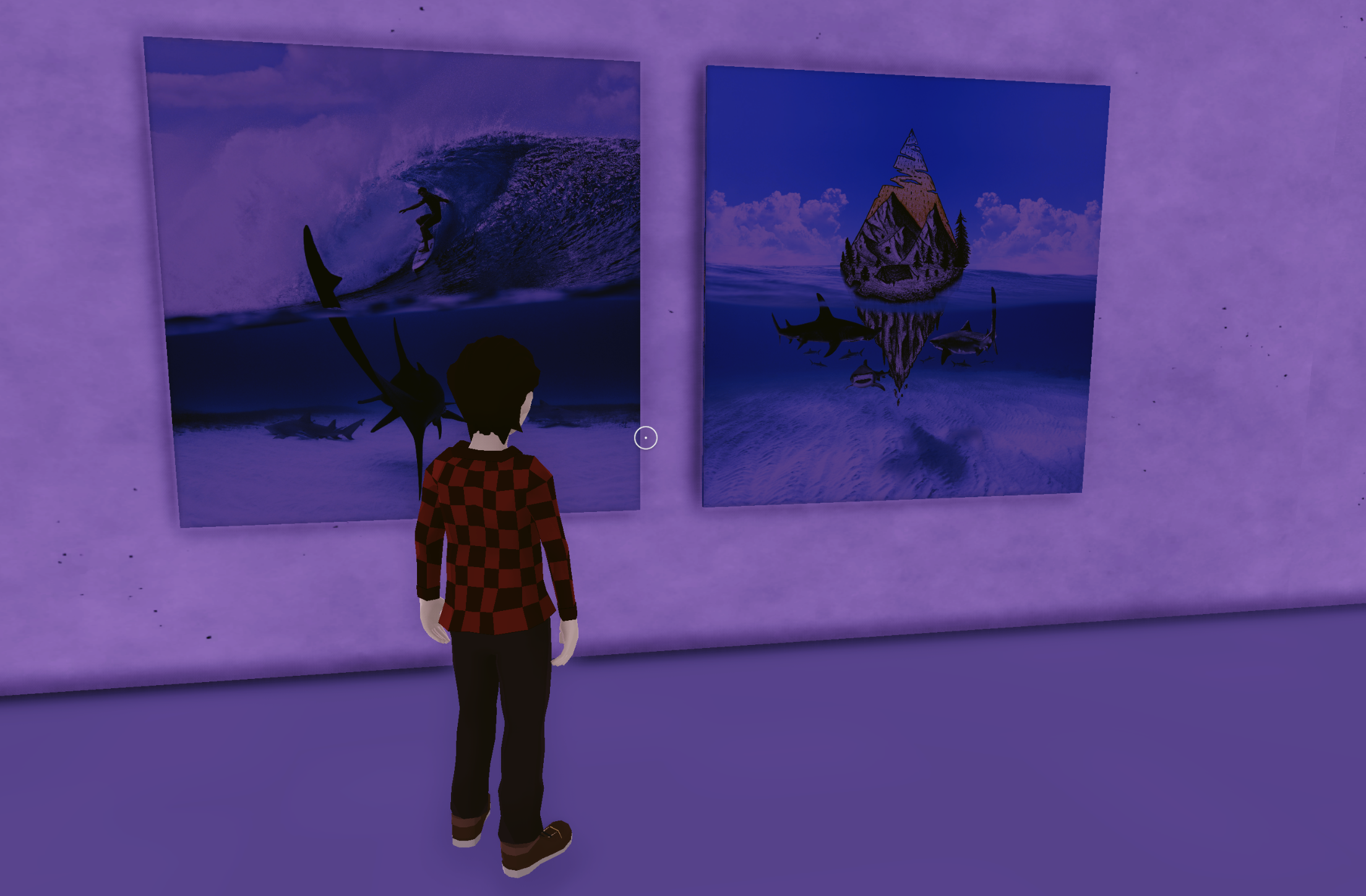I’ve entered the Museum District and started looking at the artwork. The first piece displayed was a composition of a digital shark swimming right towards an unaware surfer. It was for sale, but I decided to pass and keep browsing.
It could be the description of any given Saturday afternoon except for three details: the exhibition was taking place at Decentraland, in the metaverse; the artwork was an NFT; and I’d have to place the bid in Ethereum, a cryptocurrency, to acquire the piece.

Digital art has skyrocketed in popularity in 2021, when the term non-fungible token – known as NFT – became mainstream and NFT sales reached US$ 24.9 billion according to a DappRadar report.
NFTs are unique tokens used to identify a good, usually a digital one. They have been employed especially in the art market, with other departments, like real estate, also giving it a try. The overall idea is that you can buy a digital asset and have its ownership, including the right to resell it in the future.
No matter how many times people try to copy and paste the file to distribute or share it, the original one belongs to you, with the certificate issued using the blockchain in Ethereum to secure the data.
NFTs are being regarded as a revolution for collectables traders, while receiving some criticism as it is a relatively new thing. But buyers are not the only ones benefiting from this technology.
“Artists are participating in their revenue stream, their royalty stream, and the growth of their art practice in perpetuity. That’s unheard of, and that’s something that can be applied to all types of media,” said Lesley Silverman, Head of Digital Assets at United Talent Agency, during a panel at CES 2022.
There are two major reasons why creators have increasingly adopted NFTs, according to the panel experts. The first is financial: this technology easily allows for receiving a share of future transactions – when the buyer wants to resell the asset, for example – something that in the physical world would be much more difficult to see happening.
“The ability for an artist to get recurring payment as that NFT is recognized on each subsequent sale is just so transformational,” said Jeanne Anderson, Co-Founder and CEO of Danvas, a luxury digital art display company.
“For so long, so many digital artists didn’t have value associated with their work, and they didn’t have the ability to really be recognized. And now to not only see that recognition and have value associated with their work, but for all artists to have the ability to do secondary sale royalties, that’s transformational,” she added.
While it may be revolutionary for artists, it is important to point out that the discussion around ownership in the digital environment, specifically when it comes to NFTs, is still very incipient. In a recent interview with 6GWorld, lawyer Sophie Goossens shed a light on the topic.
“The types of rights being granted by an NFT can differ,” Goossens, a partner at Reed Smith, noted, adding as an example that the “owner” of an NFT might not automatically have the right to alter or amend the NFT they buy, which would be the equivalent of buying a chair and being forbidden to reupholster it.
Directly From the Source
The second major reason has to do with a novelty NFTs have brought about: democratisation of art. “It’s been remarkable to see what art looks like without the imposition of filters, without the imposition of curators who, in a lot of cases, have their own agenda, and honestly, without the wall space,” enthused Anderson. “You can demonstrate your talent in different ways. And the community is extremely responsive.”
Community, by the way, seems to be a very important topic for professionals who make a living out of art. Maybe even more for artists.
“In a normal art world there’s not a community. There’s the elite, high profile collectors that mingle with the gallerist, but the community as a whole doesn’t really exist. And I think with the NFT community we’re all having the same conversation on Twitter, Discord, Telegram etc.,” noted Ryan Wilson, an artist who goes by the name of ThankYouX.
In his opinion, as important as being rewarded by the artwork they create, is giving back to – yes, you got it – the community.
“For me, what community means is ‘how can I give back?’ Obviously, I’m taking because people are buying my work, but I don’t want to just take and then leave. So I believe in giving back, in opening that door for the next artists or the next hundred artists,” Wilson said.
And the buildout of that community is one of the main aspects driving what Wilson believes is a revolution in the art world.
“If you walk into a gallery and don’t know who the artist is, the gallery looks at you like you are an idiot,” Wilson observed. “Whereas in the NFT world, if you reach out to us, odds are the community is going ‘okay, here’s the basics.’ We’re changing people’s lives here. This is the biggest transfer of wealth ever in history.”
Featured image by elifxlite/Pixabay







